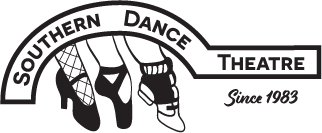How to be Rock Steady En Pointe

Pointe is an exciting and essential part of a ballet student’s training. Our students begin preparing for pointe work during level three by practicing a portion of their barre work on demi pointe. This helps to develop the strength they will need to dance en pointe. Each student responds to the demands of pointe preparation differently, and some will need longer than others to be ready for pointe work. Students will be evaluated individually at the beginning of the school year to determine if they are physically ready to go en pointe.
Physical Traits and Strength Requirements Your Teacher Looks at Prior to Considering Putting a Student En Pointe:
-
Postural control with well developed abdominal, trunk, and back muscles resulting in proper spine and hip alignment while dancing.
-
Anatomy, strength, and muscular control to both pointe the foot and stand on a high demi-pointe without sickling.
- Enough range of motion in the foot and ankle joint to stand en pointe properly.
-
Leg, ankle, and foot muscle strength to support the weight of the body and not let the dancer sink down into the pointe shoes.
-
Ability to keep the toes long (not letting them curl under) when pointing the feet.
-
Ability to maintain turnout while dancing.
-
Ability to plie properly while dancing.
-
Ability to pique onto a straight leg.
-
Ability to do 16 consecutive releves in center with proper technique.
-
Ability to balance on a high demi pointe in cou de pied and retire with a pulled up supporting leg, turnout, and proper placement.
-
Strong jumps that utilize good posture, control, and turnout.
Additional Student Factors Considered by Your Teacher:
-
Must be at least 11 1/2 years old.
-
Must have a minimum of at least 3 years of consecutive ballet training.
-
Must take a minimum of 2 (preferably 3) ballet technique classes per week with good attendance.
-
Must possess a good work ethic, be focused, and have a positive attitude in ballet class.
-
Must be responsible enough to bring all the ballet equipment she needs to class. Pointe shoes require extra care and accessories.
-
Must prepare for ballet class by arriving early and warming up.
-
Must be able to perform steps and combinations independently without watching or following classmates.
-
Good health and ability to take an entire class. If the student frequently needs to rest due to an illness or injury, she is not strong enough for the extra demands of pointe work.
-
A desire to improve her technique instead of wanting to go en pointe just for the sake of going en pointe.
Inuries That May Result from Going En Pointe Too Early:
-
Torn ankle and foot ligaments that result in surgery.
-
Permanent tendon damage that may not manifest itself until the student is in her 20s or 30s.
-
Stunted growth in foot bones that will lead to poor balance as an adult.
-
Back pain caused by improper spine alignment en pointe.
-
Knee and hip ligament weakening due to overcompensating for a lack of foot or ankle strength.
-
Disproportionate amount of calluses and bunions due to lack of support from leg and abdominal muscles .
-
Fractured foot and ankle bones.
Common Pointe Shoe Myths
Myth: “My friend has been taking ballet for the same number of years as me. We should be put en pointe at the same time.”
Fact: Being ready for pointe work is a truly individual decision that needs to be made by your teacher. Students develop the necessary skills for pointe work at different rates. Comparing yourself to other dancers is not a good way to gauge your progress. Your teacher will be best able to tell you what you need to do.
Myth: “I am 10 years old and I should go en pointe when I turn 11.”
Fact: There is no “right” age to go en pointe. Some students may be ready for pointe work around 12 years old, but others may not be ready until they are 13-14 years old.
Myth: “If I start pointe work after my classmates I won’t be as good at pointe as they are.”
Fact: Delaying pointe work until your teacher tells you that you are ready actually preserves potential rather than delays achievement.
Myth: “If I work hard enough I will go en pointe.”
Fact: Unfortunately, some students’ bodies and feet were not meant to go en pointe. Students with very inflexible ankles and/or disproportionate body weight distribution may not be put en pointe for safety reasons.
